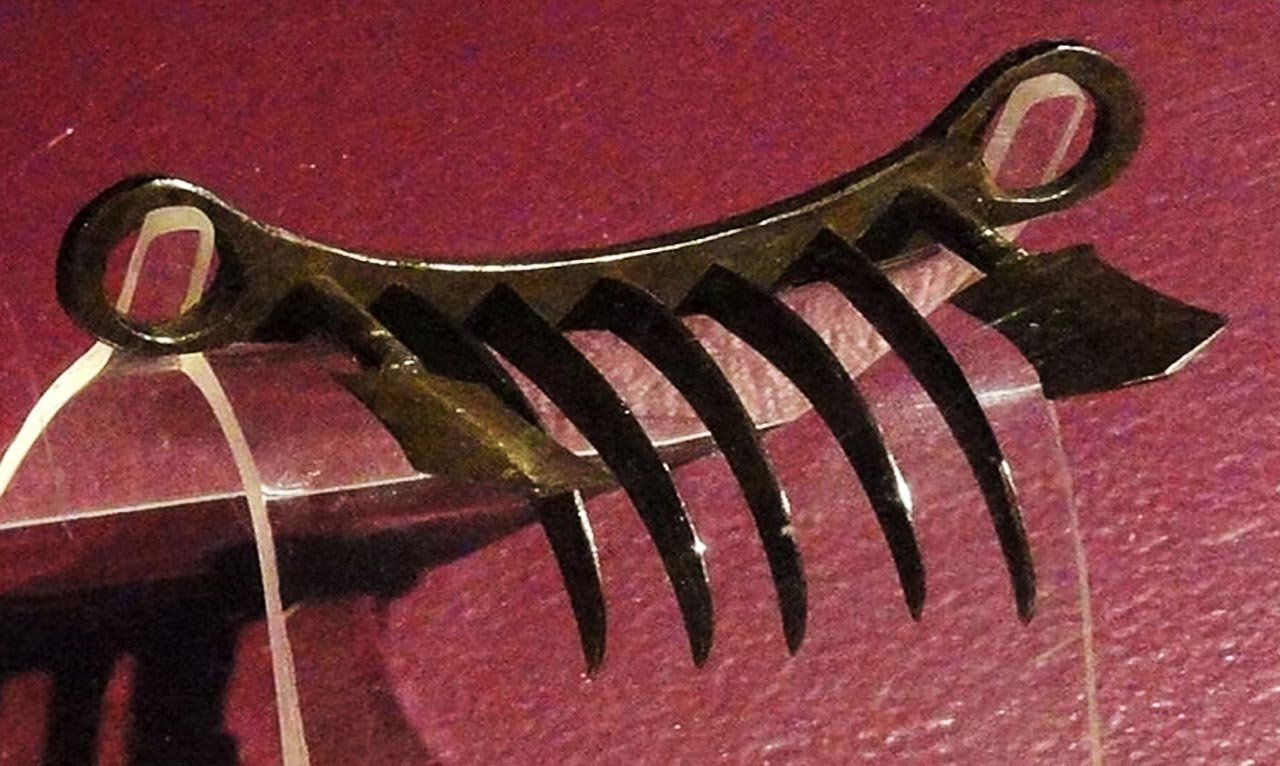
In a significant development, the UK government has agreed to return to the Maharashtra government the iconic wagh nakh, a dagger shaped like tiger claws used by Maratha king Chhatrapati Shivaji Maharaj. This weapon has historical significance because it was used by Shivaji Maharaj in 1659 to assassinate Afzal Khan, the general of the Bijapur Sultanate.
According to historical accounts, Shivaji Maharaj killed Afzal Khan with “wagh nakh” (tiger claws). Wagh nakh is a type of Indian weapon that consists of four or five curved blades attached to a crossbar or glove that is worn on the hand like a knuckle-duster. There are conflicting reports of the time period in which the bagh nakh first appeared. Poisoned “wagh nakh” (tiger claws) had been used by the Rajput clans for assassinations. The most well-known usage of the weapon was by the first Maratha leader, Shivaji Maharaj, who used a bichua and bagh nakh to kill the Bijapur general, Afzal Khan.
In 1659, Shivaji Maharaj needed to have a truce meeting with Afzal Khan; hence, he invited him over. There were negotiations about how many men each could have and, of course, no weapons to be carried. As both hugged, Afzal Khan grabbed Chhatrapati Shivaji’s neck in one arm, took out a dagger from the other, and tried to stab Chhatrapati Shivaji. But Chhatrapati Shivaji, surprisingly, was already wearing armor underneath his clothes. Then Chhatrapati Shivaji took out his tiger claws and disemboweled Afzal Khan.
Afzal Khan and most Mughal Emperors or Wazirs were treacherous and if Shivaji returned the same treachery, it’s a very valid reason; after all, while on pursuit to capture Shivaji, Afzal Khan on purpose was desecrating temples, killing innocents to provoke Chhatrapati Shivaji further. So, to bring an end to such evil, Shivaji Maharaj tore him apart. Then Shivaji somehow freed his right hand and left his arm, deep into Afzal Khan’s back, and removed the saber from the waist and pushed it into his flank! With this sudden attack, Krukkarma was shocked and backed away by screaming.
His bodyguards rushed in and tried to take him away, but Shivaji’s bodyguards were killed and then a Maratha cut Afzal Khan’s head with Vijay Ghosh. Ransinghe rang, and the Marathas hiding here and there broke out on the Bijapuri army. Unaware of this unexpected attack, the Bijapuri army did not even get a chance to handle it. How many were killed and then whoever got the chance escaped.
When the Bijapur news reached, mourning prevailed there, and even in his dreams, that ‘hill rat’ came and started scaring him. November 10, 1659, was the day to kill Afzal Khan and acquaint all the heretics, including Bijapur, with the power of the Marathas. That day, the idol of Goddess Tulja Bhavani smiled at the slaughter of that wicked one. That day, the courtyard of every temple smiled, which was defiled by that Kaliyugi Mahishasura.
Ashish of Jagadamba had given Lal of Bhavanii another Vijayashree. And the head of that Mahishasura-like Afzal was sent to the feet of Mata Jijabai and then Raje ordered her to bury her head at the Sinhgadwar in Rajgarh. The demon who defiled Raje’s Kuldevi Tulja Bhavani’s idol was killed by that son of Asura Bhavani! This battle in history is called the battle of Pratapgarh.
This year marks the 350th anniversary of the coronation of Chhatrapati Shivaji. The tiger claw weapon would be brought back from London’s Victoria and Albert Museum for a three-year exhibition to commemorate the occasion. Some historians have also stated that whether the weapon that’s in the London Museum is the same weapon used to kill Bijapur general Afzal Khan is subject to verification. However, the Maharashtra government claimed that the tiger claws, which will be brought back to the country, were used by Shivaji Maharaj to kill Afzal Khan. The wagh nakh is expected to be housed at the Chhatrapati Shivaji Maharaj Museum in south Mumbai.
The Maratha victory at the Battle of Pratapgad in 1659 was a turning point in Chhatrapati Shivaji’s campaign to establish the Maratha Empire. Despite being outnumbered, the Marathas defeated the Adilshahi forces led by Afzal Khan, boosting Chhatrapati Shivaji’s reputation as a brilliant military strategist.
Chhatrapati Shivaji killed Afzal Khan at the foot of Pratapgarh fort in present-day Satara district in Maharashtra. This episode has since become a part of folklore, symbolizing Chhatrapati Shivaji’s bravery and cunning in defeating a much larger and more powerful enemy. The authenticity of the ‘wagh nakh’ is under debate in Maharashtra. History expert Inderjit Sawant has pointed out that the Victoria and Albert Museum website states that Chhatrapati Shivaji did not use the weapon.